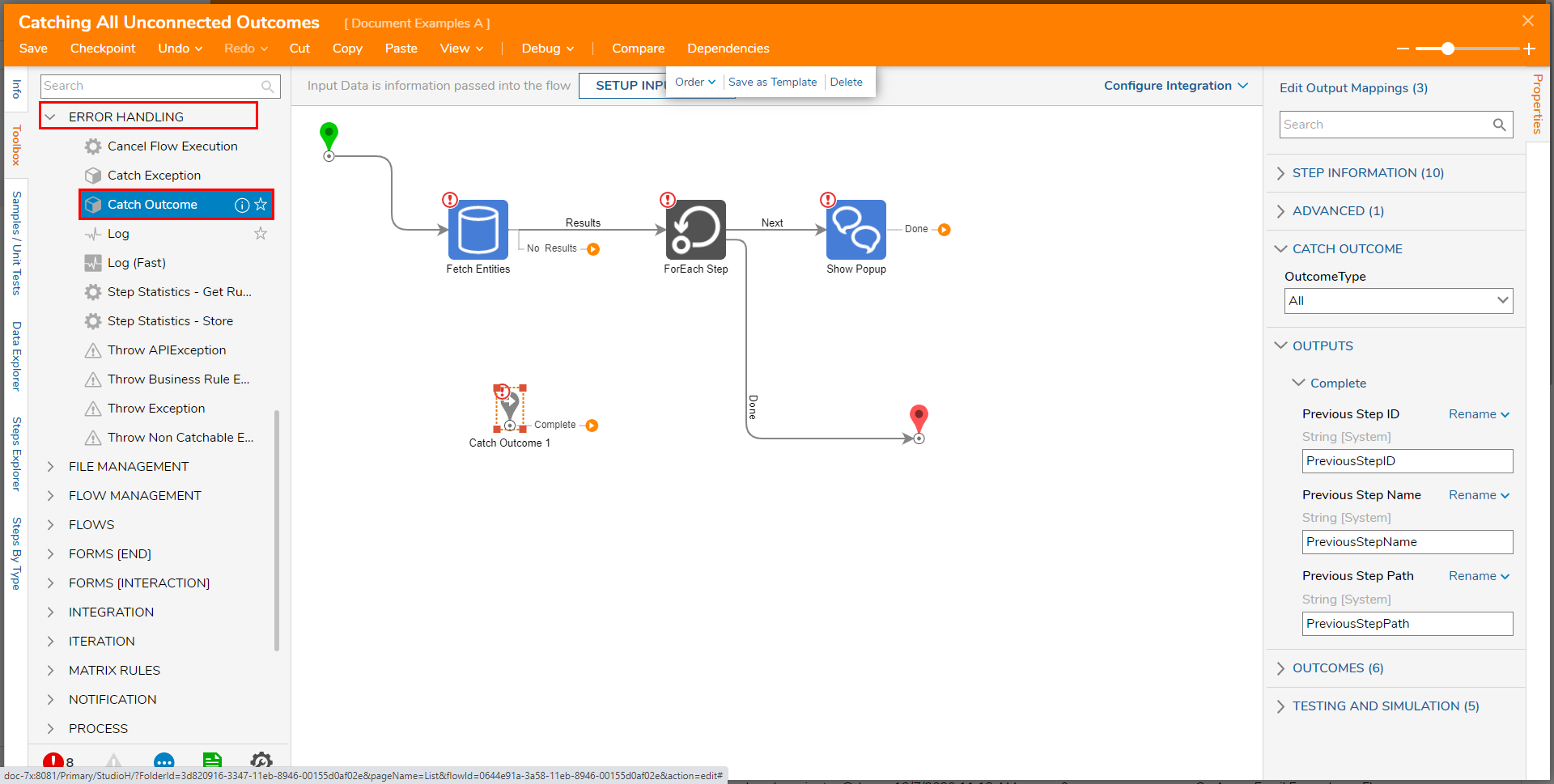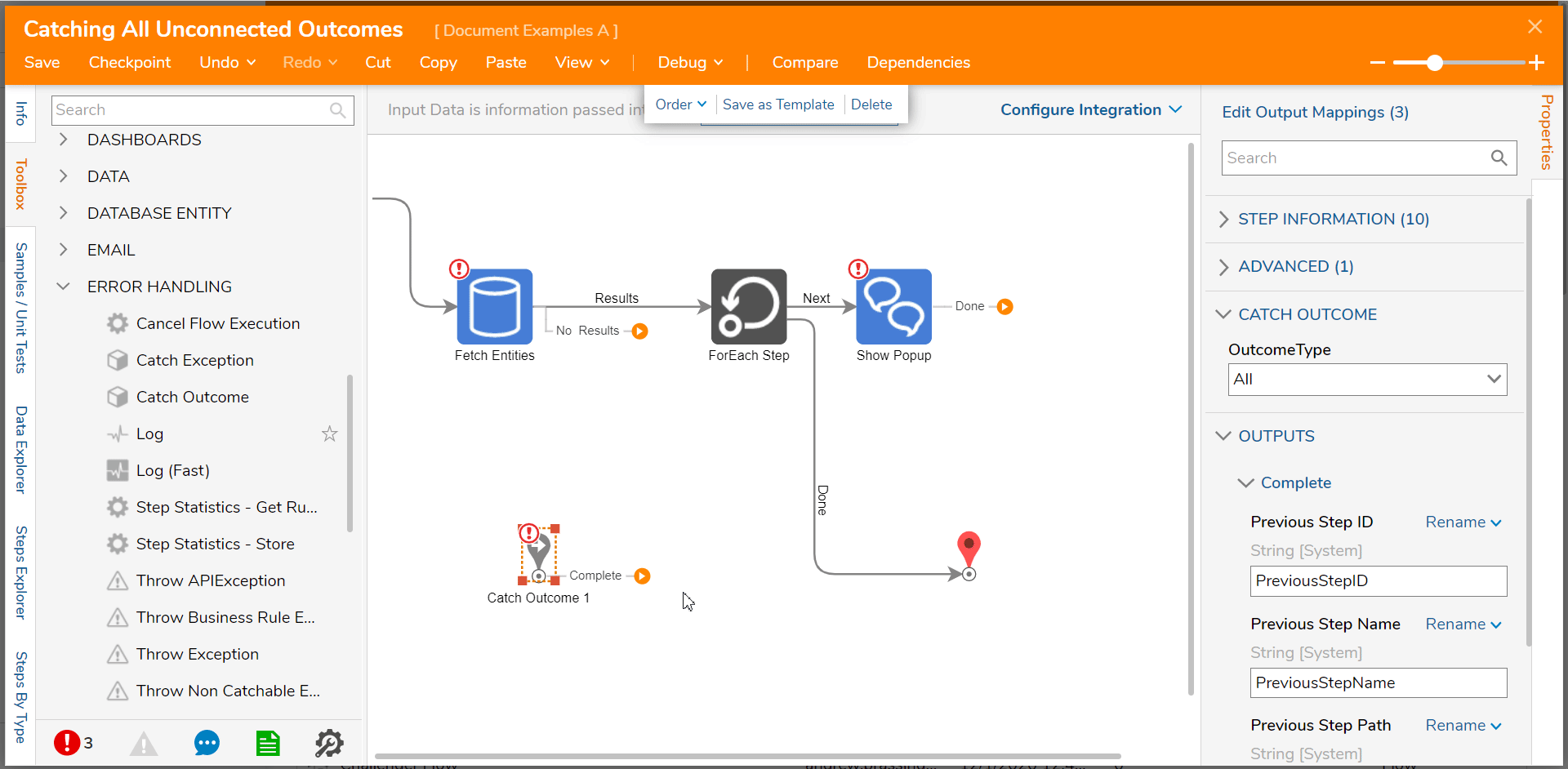Overview
The Catch Outcome step can be configured to trigger when step outcome paths are not connected to the rest of the Flow. This step can be used to clean up or simplify Flows, by grouping several of the same outcome paths that are expected to follow the same Flow logic.
For example, if a Flow has several No Results paths that are all going to the same step but not yet connected, the Catch Outcome step can be configured to trigger. When this happens, all of the No Results paths assume the logic that comes after the Catch Outcome step.
Example
The following example requires prior knowledge of basic Flow building. For more information on building Flows, see Flow Design Overview.
- Create a Flow that consists of a multi-step process. This Flow in this example uses a Fetch Entities step, a ForEach step, and a Show Popup step. Each step has the required Inputs mapped appropriately, but a validation warning exists because there are unconnected outcome paths.
- Locate the Error Handling section of the Toolbox tab or use the search bar to find and add a Catch Outcomestep to the Flow.This step acts similar to the Start step, in that no step needs to come before it in order for it to function.

- Connect the Complete outcome path to the End step.
- Select the Catch Outcome step to navigate to the Catch Outcome section of the Properties tab.
- Select OnlyPathsNamed from the OutcomeType dropdown menu.
- In the OnlyPathsNamed box, enter the name of the paths that will be received by this step. Once the outcome path names are added to the step, the validation warning will be cleared from the steps where they previously appeared due to the unconnected paths. The Catch Outcome step in this example simply leads to the End step, but otherwise, it could lead to an entirely different set of Flow logic.
